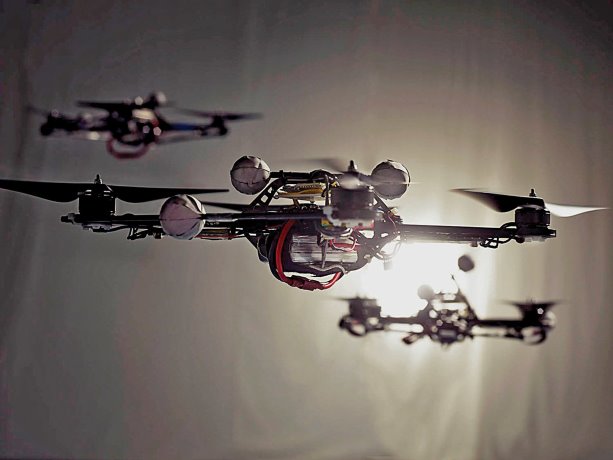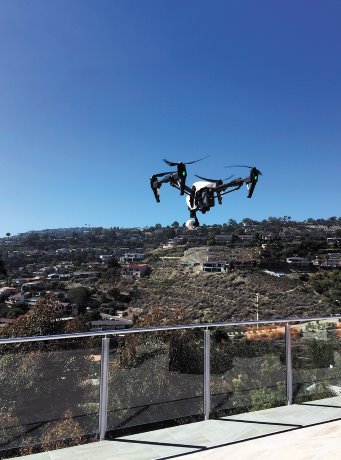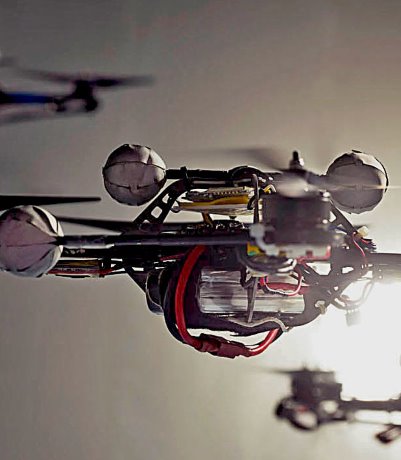As the recent collision of a drone and a passenger plane above the Quebec City airport shows, unmanned aerial vehicles (UAVs) are appearing everywhere these days — sometimes very, very suddenly.
Although drones can wreak havoc if they’re in the wrong hands, they can also be very handy when they’re used carefully and intelligently.
To inform Buildex Calgary 2017 attendees on what is permitted under current laws and regulations with regard to drones, Erika Carrasco, a partner in the Calgary law firm of Field LLP, will present T22 — It’s a Bird, It’s a Plane, No It’s a Drone! Legal Know-how for Successful Use and Operation of UAVs on Construction and Commercial Real Estate. The presentation takes place Thursday, Nov. 9.
Carrasco says her talk will cover the benefits and the risks of using drones.
She says she will tell Buildex attendees what they need to know about the legal side of the use of drones, and how to profit from the small air-borne vehicles in their businesses.
Her presentation will cover federal, provincial and municipal regulation of drones and how these regulations affect businesses; drone-related liability and how to mitigate risk; and potential issues around privacy, contract and insurance.
Like the skies in which they fly, the uses for drones in the construction industry is practically endless.
They can be used for aerial surveillance, to help calculate site dimensions, height restrictions and access points. Drones can also be used for job site surveillance, providing live feedback for site superintendents and safety officers and for high-definition video. Drones carrying HD video cameras can show the progress on a construction site at much lower cost than airplanes or helicopters.
"My presentation will focus heavily on how drones can be used legally," said Carrasco. "I will explain how to use drones successfully through understanding how the technology works, what type of drone an operation needs, and where the drone and its operations fall under the current laws and regulations."
Transport Canada is the main regulating authority for drones.
"My presentation will explain Transport Canada’s rules, how they affect drone use, and why the rules exist in the first place," said Carrasco.
Transport Canada also sets the rules for planes and helicopters.
"Keep in mind the rules for drones are quite different from those for airplanes and helicopters," she said.
"Planes and helicopters are much larger than drones and they can carry passengers and cargo. Because the risks with operating the larger machines are greater, airplanes and helicopters have stricter regulations compared to drones."
Transport Canada regulations no longer make a distinction between the recreational and commercial use of drones.
"Now an Interim Order, and proposed amendments, are moving away from the distinction and are instead regulating largely by weight," said Carrasco. "My presentation will explain this further."
The legal risks involved in drone operation vary depending on how a drone is used.
"My talk will show how the legal risks include everything from damaging the drone itself, to damaging property, to serious personal injury and even to the risk of interfering with the safety of a commercial aircraft, such as the recent Quebec City incident," said Carrasco.
The minimum amount of liability insurance a drone operator must carry is $100,000, which is mandated by Transport Canada.
"It’s worth stressing that $100,000 is just a minimum amount," said Carrasco. "This is not necessarily the recommended amount of insurance. My presentation will explain what you need to consider to make sure you are covered."
Depending on such factors as the type of construction project, its location, population density of the surrounding area, the cost of the drone, how it is being used and who is using it, the owner or a third party and the other types of insurance which would probably be needed too.
There will be more than 40 presentations, like the one on drones, at Buildex Calgary 2017. There are more than 225 exhibitors and 3,500 visitors expected at this year’s event.

1/2
Drones could benefit those in the construction industry by providing a different angle and view of various aspects of a site, states Professor Angela Schoellig of the Institute for Aerospace Studies at the University of Toronto. She says more discussion needs to be had about where they can best be applied in the industry.
Photo: Basil Stuecheli
2/2
An example of a drone in action. The construction industry is currently exploring how best to use this innovative technology properly for various types of projects and needs.
Photo: Drone Base"










Recent Comments
comments for this post are closed